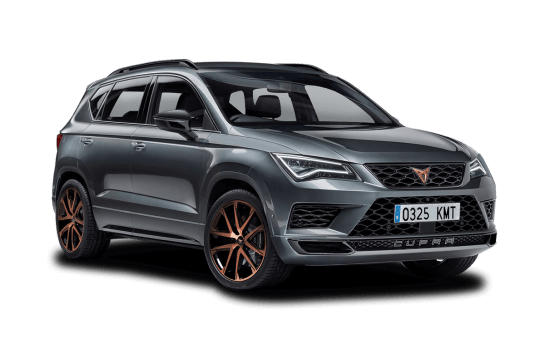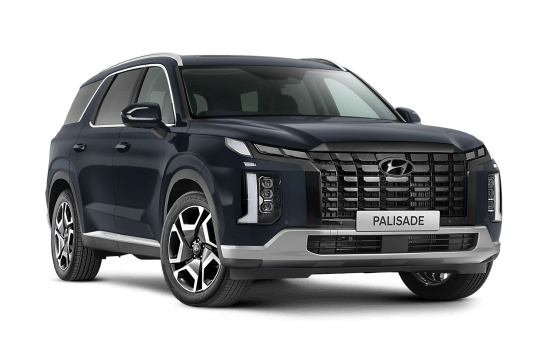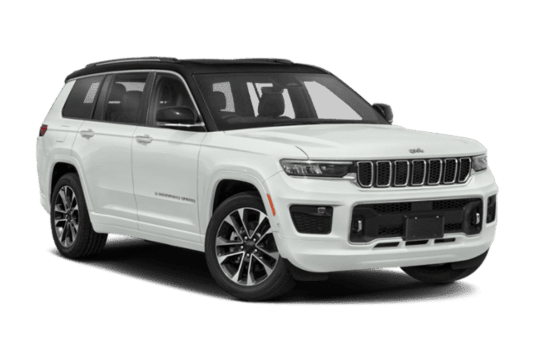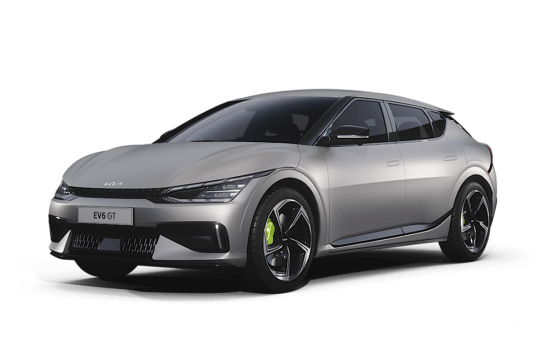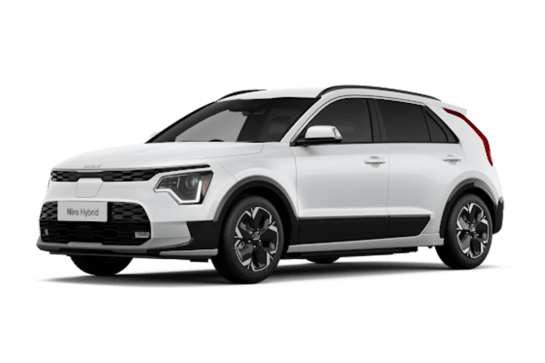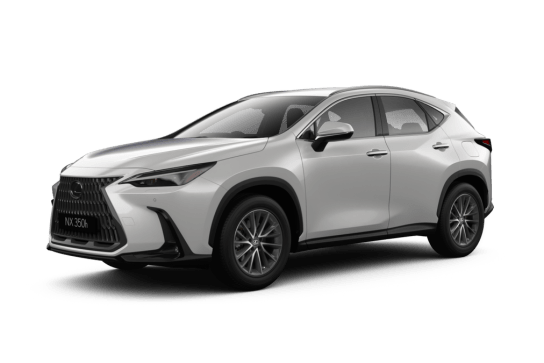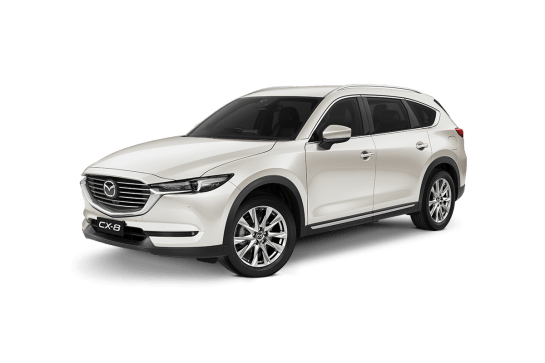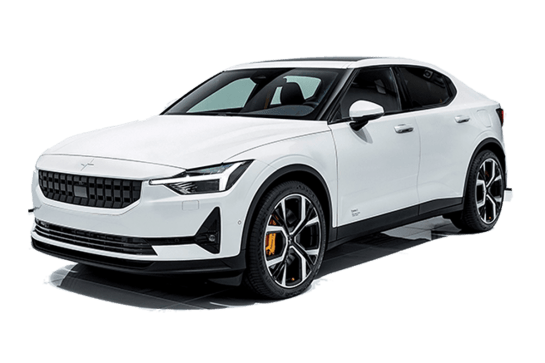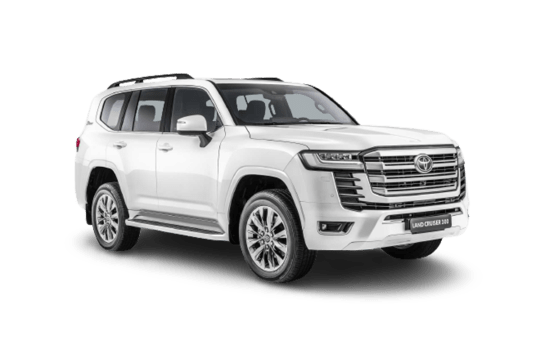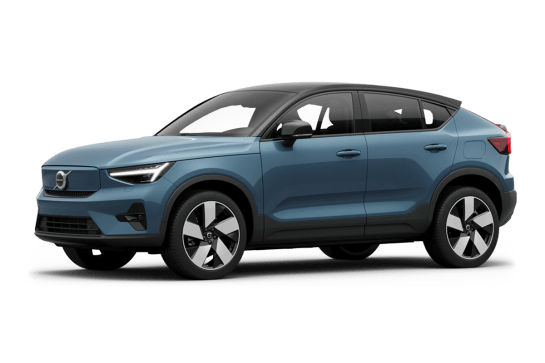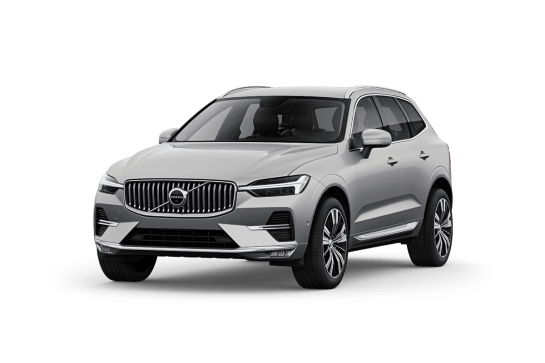
BMW X3 VS Volvo C40
BMW X3
Likes
- M performance
- Rear seat knee/headroom
- Versatile family/driver’s car
Dislikes
- No ANCAP
- Prefers premium fuel
- Rear seat shoulder room for three adults
Volvo C40
Likes
- Great charging and range
- Two well specified variants
- Impressive driving performance
Dislikes
- Single motor not as good value
- Seats could be more comfortable
- Rear seat space compromised
Summary
BMW X3
BMW has recently launched its fourth-generation (G45) X3 range, which comprises three petrol variants including the entry-level 20 xDrive, mid-grade 30e xDrive PHEV and top-shelf M50 xDrive.
The new trio brings revised powertrains, new exterior and interior styling, increased standard equipment, enhanced technology and an emphasis on the use of sustainable materials.
We recently trialled the five-seater flagship to see if it has the right mix of performance and practicality to maintain the X3’s enduring appeal for Aussie families.
Read more about
- Diesel not dead yet! 2025 BMW X3 40d to join the range in Australia to tackle the Audi Q5 and Mercedes-Benz GLC premium family SUVs
- BMW capped price servicing - cost, schedule & info
- Why 2025 is a make-or-break year for Volkswagen, Mercedes-Benz, Audi and Porsche, but BMW could show them the way | Analysis
| Safety rating | — |
|---|---|
| Engine Type | 3.0L turbo |
| Fuel Type | Premium Unleaded Petrol |
| Fuel Efficiency | 8.9L/100km |
| Seating | 5 seats |
Volvo C40
Throughout its history Volvo has been known for a lot of things. Being a safety leader, dorky but endearing station wagons, ‘bloody Volvo drivers’, and more recently, a trailblazer in minimalist premium design.
The C40 is the first step in a next chapter for Volvo, with the brand wanting to be known next for its leadership in the electric space. For the first time for Volvo, it’s a fully electric offering
But in a world of Teslas, Polestars, and Mercedes Benz EQs, where does the C40 sit, and is it worth considering in an increasingly congested premium small SUV space?
We went to its Australian launch to find out.
Read more about
- How safe are the 2023 BYD Atto 3 and Volvo C40 electric cars? Two Chinese-built EVs score highly, but there's a catch with one...
- Best electric cars arriving in 2022
- Sick of waiting for a Tesla Model Y in Australia? Volvo could be about to eat its lunch as C40 Recharge orders open with 434km driving range and sharp pricing
| Safety rating | |
|---|---|
| Engine Type | — |
| Fuel Type | Electric |
| Fuel Efficiency | —L/100km |
| Seating | 5 seats |
Verdict
BMW X38.1/10
This is a highly competent all-rounder, given that it has the comfort and practicality for urban family duties yet with its revered M breeding can produce a level of performance which, in competent hands, could hold its own at a track day where its capabilities could be safely explored.
Volvo C408.3/10
The C40 becomes a compelling option in the electrified small SUV space, offering a premium look and feel, great range and tech inclusions at the price, as well as awesome on-road dynamics.
Its main downsides are the rear seat, which is compromised by its platform and design-led roofline, and the overwhelming power and added traction of the dual-motor makes the single motor less attractive on the value front.
Still, regardless of variant chosen, the C40 looks to offer a stand-out balance of price, range, and performance, against its traditional rivals and newcomers alike.
Design
BMW X3
The fourth-gen X3, which has a lighter but stiffer body, shares the same wheelbase as its third-gen predecessor but at 4755mm end-to-end it's 34mm longer and it's 29mm wider.
It’s also 25mm lower, which combined with front and rear track-width increases and adaptive suspension damping to sharpen the handling underlines its sportiness and driver appeal, despite a substantial 2055kg kerb weight.
The new exterior design is characterised by short overhangs, flush door handles, a larger ‘split kidney’ grille, new LED taillights and L-shaped light elements for the LED headlights.
The new interior design is a classy mix of soft-touch materials and high-gloss hard surfaces in tastefully contrasting tones. The seats are upholstered in a new synthetic leather called 'Veganza' ('Espresso Brown' in our example) which according to BMW requires 85 per cent fewer CO2 emissions to produce than genuine leather (which is still available as an extra-cost option).
Combined with subtle use of ‘Magnolia’ fine-wood trim inserts, satin chrome, piano black, blue/red M highlights and slender ambient light-strips, it’s a cabin that exudes opulence.
Volvo C40
Volvo has become a brand with a distinctive and consistent design language which embodies the kind of beautiful minimalism normally associated with Scandinavian brands.
I have always liked how Volvo says more with less design elements, with only gentle touches of chrome or gloss black, and a lack of over-the-top sporty pieces avoiding the temptation to over-sell the sporty potential of the brand’s range.
The C40 takes the small SUV formula, well established by its XC40 relation, and gets a bit weird and experimental. It’s slightly lower and has a more coupe-styled rear, with a strongly raked rear window giving it a sportier and more aggressive look than the rest of Volvo’s SUV range.
The styling is sold by an angular spoiler piece running atop the boot, and the rear light clusters have gone all minimalist, constructed of individual pieces rather than a single transparent housing, and they give a nod to the C30 hatchback which this car is the spiritual successor to, by name and nature.
The interior offers up no surprises, sticking to the formula Volvo has established across all of its current models. An effortlessly premium space with, again, a minimalistic dash dominated by the portrait touchscreen, the C40’s premium nature is confirmed by its finely patterned inlays, simple chrome pieces, and abundance of soft-touch surfaces.
The big upright vent fittings with clever rhomboid patterns on their adjustment dials are always a highlight piece of modern Volvos, and the pattern work is continued on the central volume adjust dial and even on the little rotating pieces of the light and wiper stalks. Clever.
Even the software is paired back on the multimedia suite and digital dashboard, with easy to use shortcuts and simple menus which suit the car.
Volvo might turn off some buyers with the more unconventional shape of the C40. But for those looking for a more traditional SUV it also offers the XC40 in the same two variants, and the Polestar 2 caters to those not looking for an SUV at all.
Practicality
BMW X3
This would make a great family weekend escape machine, for which BMW quotes a 645kg payload rating. It’s also rated to tow up to 2500kg of braked trailer, which could pose a challenge given the relatively low 100kg tow-ball download limit (TBD is typically around 10 per cent of trailer weight).
BMW also does not publish a GCM figure (how much it can legally carry and tow at the same time) so we can’t confirm if it can carry its maximum payload while towing its maximum trailer weight.
Even so, the M50 has a useful-sized luggage area which offers up to 570 litres (or 0.57 cubic metres) of load volume with the rear seat upright.
This expands to 1700 litres (or 1.7 cubic metres) with the rear seat folded flat, which can be handy for a multitude of tasks like transporting a mountain bike or hauling home flat-pack furniture.
There’s comfortable space for the driver and front passenger, along with useful storage including large bottle-holders and bins in each front door.
The centre console has two small-bottle/cupholders plus wireless phone-charging and a pair of USB ports. There's also a glove box plus another box at the rear of the console with a padded lid that doubles as an elbow rest.
The rear bench seat is surprisingly spacious, given that I’m 186cm tall and when seated behind the driver’s seat in my position I still have about 40mm of knee clearance, which is optimised by the concave shape of the front seat backrests.
The spacious and airy feel is enhanced by the ‘panorama’ glass roof which spans the full length of the seating area and allows generous headroom even for tall people.
However, shoulder room is tight for three adults and the centre passenger’s feet must contend with the transmission tunnel, so even though it would be fine for three kids we’d suggest a limit of two adults for longer trips.
Rear passengers get privacy glass and pull-up roller sunshades, large-bottle holders and bins in each door plus net-type pockets and anchorage points for media devices on each front seat backrest. There are also two small-bottle/cupholders in the fold-down centre armrest.
The rear of the centre console has two USB ports, adjustable air-vents plus controls for zone temperature, airflow preferences and seat-heating.
The bench seat features a 40/20/40 split, which allows the centre backrest to fold forward independent of the two outer backrests to allow long loads like snow skis, home hardware etc to be carried if securely fastened.
A power tailgate provides access to the luggage area, which is equipped with a handy 12-volt accessory socket plus load-anchorage points front and rear, extra storage nooks for small items on either side and a retractable roller-type load cover. Overall, this vehicle offers good practicality for family duties.
Volvo C40
The C40 is essentially a XC40 with a cropped down roofline, and there are some obvious downsides which this new shape brings.
The front seat throws no surprises, though, offering plenty of room for two adults with a welcome level of adjustability for the seat and wheel. The seats could be more comfortable, though, with a notable lack of padding in the base compared to some luxury (or even non-luxury) rivals.
I’m a fan of the fabric trim which comes on both grades, bucking the trend of needing to have leather or leather-like trim for a car to feel ‘premium’.
The ample window space up front, including the massive glass roof helps the C40’s cabin feel spacious, but the view out the rear with its aggressive design is all but a very limited letterbox aspect, particularly if the rear seat headrests are in the upright position.
While some controls are exclusively via touch interface, there is a physical volume dial, and shortcut buttons for the defogger functions.
Temperature is controlled by touch, however, and the detail settings have some smaller toggle adjustments. Tricky to jab at when you’re on the move.
The digital dash is refreshingly simple, but minimally adjustable, with the choice of either a nifty navigation screen, a blank screen, or trip details being the only options.
Cabin storage is good but not stellar. There are bottle holders and big pockets in the doors, a set of two cupholders in the centre (beats the Polestar 2’s single cupholder), a small tray with a wireless charger under the multimedia screen, and a smallish console armrest box.
The rear seat is where the real problem exists. Unlike the XC40, the C40’s cropped roofline means my head was hard up against the roof (I’m 182cm tall).
I did have decent knee room behind my own seating position, however the seat comfort in the back still isn’t as good as some rivals.
The middle position is also compromised, thanks to the raised centre floor piece the C40’s platform needs to facilitate all-wheel drive in its combustion relations.
A bottle holder appears in each door pocket, and in a rare inclusion, there are heated outboard rear seats, adjustable air vents, and USB-C charging ports.
The boot has a quoted capacity of 413 litres with the rear seats up. The floor is comparatively high suggesting a smallish space when loaded with luggage cases, for instance. Stay tuned for a follow-up review so we can see how well it holds our three-piece demo set.
The floor itself has an adjustable, pop-up divider and multiple luggage hooks, making it quite versatile, and there is a cavity beneath which can hold your charging cables as well as the inflator kit in place of a spare wheel.
Price and features
BMW X3
Our X3 M50 xDrive test vehicle, finished in new 'Dune Grey Metallic', comes standard with a 3.0-litre turbocharged inline six-cylinder petrol engine incorporating 48-volt mild-hybrid technology, plus an eight-speed automatic and permanent all-wheel drive for a list price of $128,900.
You’d expect a high performance prestige vehicle costing six figures would be packed with desirable standard features and the M50 xDrive delivers, starting with big 21-inch 'M' lightweight alloy wheels shod with wide 285/35R21 tyres.
However, there’s no room for a spare (not even a space-saver) so you get a tyre repair kit instead.
The standard equipment list also includes adaptive LED headlights (with matrix high-beam and blue design detailing), a power tailgate, an ‘Iconic Glow’ illuminated kidney grille with M-specific elements, quad exhaust outlets, a panorama full-length (fixed) glass roof, a choice of six premium metallic paint colours and more. The 'M Sport Pro' visual enhancement package is also included.
Step inside and the driver is treated to a head-up display and an elegantly curved digital dash display, which spans about two-thirds of the cabin's width. It seamlessly incorporates a 12.3-inch driver’s instrument display (made from recycled polyester) and 14.9-inch multimedia display controlled by BMW’s latest 'iDrive System 9' software.
Premium audio is provided by a 15-speaker 750-watt Harman Kardon surround sound system, which includes digital radio and wireless Apple/Android connectivity. There’s also wireless phone charging.
The driver gets a thick leather-rimmed and heated 'M Sport' flat-bottom steering wheel and the driver and front passenger are also treated to sumptuous bucket seats with multiple power adjustments and heating/cooling.
Up to three passengers can share the rear bench seat and indulge in the luxury of three-zone automatic climate control, heating for the outer seating positions, privacy glass, roll-up sunshades, two USB-C ports and lots more.
Volvo C40
When it comes to electric vehicles, it’s impossible to consider price alone, as you also have to consider driving range, and the C40 manages to impress on both fronts.
Its refreshingly simplified range consists of just two highly-specified variants, a single motor which starts from $74,990, offering a 434km driving range, or a dual motor starting from $82,490 which offers a 420km driving range.
There’s much more devil in the detail, but to set the scene there are now quite a few direct rivals in this price-bracket, including everything from the Tesla Model Y (from $72,300), Mercedes-Benz EQA (from $78,513), Polestar 2 (from $63,900) and even the Kia Niro which is similarly sized and specified (from $65,300).
Interestingly, the C40 is closely related to the Polestar 2, but has a much higher base starting price. Volvo says this is because it carries a higher standard specification, and offers the C40 without option packs.
Standard gear on the base single motor C40 includes 19-inch alloy wheels, a 9.0-inch portrait multimedia touchscreen (running a Google-based always-online software suite), LED headlights, dual-zone climate control, a fixed panoramic sunroof, electrically adjustable front seats, heated seats for the front two and outboard rear seats, a powered tailgate, as well as keyless entry with touch-free ignition.
Interestingly, Volvo also told us some 90 per cent of customer interest so far has been for the more expensive dual-motor variant, which is particularly impressive for doubling the power output while adding 20-inch alloy wheels, a 360-degree parking suite, premium Harmon Kardon audio, and an alternate interior trim.
Both variants score safety equipment and items which are otherwise part of expensive option packs in the Polestar 2 range. We’ll take a look at the full safety gear later in this review.
Overall, the C40 impresses on the premium car value front compared to rivals, bolstered by solid range and impressive performance.
Under the bonnet
BMW X3
According to BMW, the M50 xDrive features the most powerful inline six-cylinder petrol engine fitted to an M Performance model.
This 3.0-litre unit clearly benefits from BMW’s twin-scroll turbocharging technology, which combined with variable valve timing and an extra 13kW/200Nm from the 48V mild-hybrid technology produces a stomping 293kW of power at 5500rpm and 580Nm of torque at 1900rpm.
It also has a ‘boost’ function, which provides an extra burst of power for short periods when maximum acceleration is required when overtaking etc.
It’s activated by the left paddle-shifter on the steering wheel and automatically optimises transmission/chassis settings to suit. There’s also a drive mode selector, with ‘Sport’ offering the most responsive and engaging experience.
The eight-speed torque converter automatic is a refined and efficient transmission well suited to this full-time all-wheel drive application. Rapid-fire manual shifting is also available using the steering wheel paddles.
Volvo C40
Great news here, the C40 can be chosen with two powerful layouts, either a front-wheel drive 170kW/330Nm set-up, or a dual-motor all-wheel drive arrangement, able to make use of nearly double the power at 300kW/660Nm. The dual-motor is capable of sprinting from 0-100km/h in just 4.7 seconds.
The front-drive is backed by a 69kWh battery allowing it a 434km range, while the dual motor ups the battery size to 78kWh to allow a 420km driving range.
Efficiency
BMW X3
BMW claims an official average combined consumption of 8.2L/100km but the dash display was showing 9.9 at the completion of our 210km test, which included a mix of suburban, city and highway travel.
Our own figure, calculated from fuel bowser and tripmeter readings, came in slightly higher again at 10.5L/100km, which given our test vehicle’s two-tonne-plus weight and performance capabilities is still reasonable economy.
So, based on our figures, you could expect a realistic driving range of around 600km from its 65-litre tank, which prefers premium 98 RON petrol.
Volvo C40
Surprisingly, energy consumption is quite high for both C40 variants. The single motor is the more efficient of the two, consuming 16.8kWh/100km on the more lenient ADR testing schedule, while the dual motor officially consumes 22.2kWh/100km to the same standard. I saw around 23kWh/100km overall in my short test of the dual-motor variant.
Energy consumption could be better for both, as I have achieved more consistently impressive results particularly from Hyundai and Kia electric cars.
Where the C40 is more impressive though is its charging specs, which are exactly where they need to be for a car this size. On a rapid DC charger, the C40 can charge at a rate of 150kW meaning a 10 - 80 percent charge in 40 minutes for the dual motor, or 32 minutes for the single motor.
On the slower AC standard, the C40 charges at a rate of 11kW. Expect a 10 - 80 percent charge time of around five or six hours on this standard.
The C40 uses a European-standard Type 2 CCS charging port, although it misses out on the handy two-way charging feature offered by some rivals.
Driving
BMW X3
First, the fun stuff. It certainly feels like ‘the ultimate driving machine’ when you slide behind the chunky leather-rimmed flat-bottom steering wheel and hold it in your hands.
The driver’s seat offers not only powered adjustment of backrest and base-cushion rake, but also four-way lumbar support and side-bolsters that can tighten their embrace of your upper torso to contend with high cornering loads.
There’s also manual extension of the base-cushion length for greater thigh support and a big left footrest to brace against, so you could not ask for a more accommodating and purposeful driving position.
The steering is perfectly weighted and the quartet of enormous disc brakes provide ample bite with superb pedal feel. Combined with its adaptive suspension and wide grippy tyres, the X3 is a family car that’s also invigorating to drive, particularly when you select the ‘Sport’ mode.
The enhanced engine response and sharper steering that result (even the instrument panel display changes) make any twisting mountain road an engaging experience, enhanced by an intoxicating exhaust note that only a BMW M six can deliver.
The turbocharged engine offers an unyielding surge of acceleration from well below peak torque at 1900rpm to maximum power at 5500rpm, making BMW’s claim of 0-100km/h in a scant 4.6 seconds sound credible.
You can also manually change gears using the steering wheel paddles, but we found the gearing and shift calibrations so good that we preferred to leave it in auto mode.
However, the X3 M50 has two distinct personalities, as in more relaxed drive modes it’s just as happy serving as practical family transport during the week for grocery shopping, daily school runs and other common tasks.
It’s also a comfortable tourer for family getaways, with long gearing that requires only 1500rpm to cruise at 100km/h where low engine, tyre and wind noise allow highway conversations at lounge room levels.
Volvo C40
If you’ve driven any kind of XC40 or even a Polestar 2 before, the C40 will offer no surprises. It’s pretty much exactly the same from behind the wheel with a few subtle tweaks.
This is a very good thing. The C40 is quiet, easy to drive, and its electric motor and regen system offer a smooth single-pedal experience.
It is also alarmingly, overwhelmingly, rapid. While its massive set of batteries under the floor make it feel heavy off the line in stop-start traffic, sticking your boot into the accelerator will remove any doubt, particularly in the dual-motor variant, that this Volvo means business.
The dual-motor also has an incredible torque-vectoring system, making it extremely difficult to elicit so much as a squeak from its tyres. It also feels as though torque is distributed quite evenly between its two driven axles, making it feel neither prone to over- or understeer.
This has the effect of making the C40 feel somewhat indestructible in the corners, with absurd levels of grip.
The same feeling is present in top-spec versions of the Polestar 2, only the feeling of ever-present weight is more noticeable in the higher-riding C40, which can make it unsettling to take corners at the kinds of speeds it is capable of.
The steering tune is interesting. Volvo offers two software-controlled modes, either heavy or standard, and the standard mode is heavy enough.
Despite its electrical assistance, the wheel does continue to offer some organic feedback, making the C40 a pleasure to steer on countryside roads.
The ride is also surprisingly good, despite massive wheel options. I was impressed how easily the C40 handled most bumps and undulations, communicating little to the cabin.
The ride can approach its limits with such big wheels and the weight of its batteries, generally these are communicated via unsettling thuds from underneath the car. Regular undulations at higher speeds also had the C40 bouncing around a little.
On the whole, though, the cabin is kept relatively insulated and serene, adding an element of total confidence, similar to that offered by Teslas, whilst offering better ride quality with a softer edge. At higher speed, at least on the 20-inch wheels, road noise does pick up, however.
In terms of electric driving, there is a single adjustable setting for regen. The car either offers a full single pedal mode with maximum regenerative braking to bring the car to a halt with the motor alone, or a ‘standard’ mode which tones the regen down and offers it blended in via the brake pedal.
Single pedal mode is more efficient. I suggest you stick to it if you want to make the most of this car’s efficiency.
I was surprised to have so few complaints about the C40’s drive experience. This is a balanced and capable EV which is yet another example of how even vehicles which use combustion platforms are improved out of sight by full electrification.
Safety
BMW X3
No ANCAP rating as yet but this X3 comes with a long menu of standard safety features including multiple airbags, AEB with pedestrian/cyclist/junction detection, front collision warning with brake intervention, lane-keeping, active cruise control, head-up display with speed sign recognition, front and rear cross-traffic alert, tyre pressure monitoring and lots more.
There are also ISOFIX and top tethers for the two outer rear seating positions.
Volvo C40
Sticking to its brand promise, Volvo offers the full range of active safety equipment on the C40 regardless of variant.
This includes freeway-speed auto emergency braking, rear auto braking, lane keep assist with lane departure warning, blind spot monitoring with rear cross-traffic alert, and one of the best adaptive cruise control systems on the market.
The only item the single motor misses out on is a 360-degree parking camera, which is exclusive to the dual motor variant.
It is notable how the adaptive cruise control, blind spot monitoring rear cross-traffic alert, and rear auto braking are on the options list for the Polestar 2.
These active systems combined with eight airbags (the standard dual front, side, and curtain, as well as a driver’s knee and centre airbag) make for a five-star ANCAP safety rating to the latest 2022 standards.
Ownership
BMW X3
It comes standard with a five-year, unlimited km warranty.
Scheduled servicing is determined by BMW’s vehicle monitoring system which advises when a service is needed, typically around 12 months/15,000km.
A capped-price servicing package covering five years/80,000km (whichever occurs first) totals $2475, or an average of $495 per service.
Volvo C40
The C40 is covered by Volvo’s five year and unlimited kilometre warranty, with a separate eight-year, 160,000km warranty for the battery. There is also eight years of roadside assistance attached.
It is pleasing to see the service intervals for the C40 are long, as they should be for an electric car with so few moving parts, set at two years or 30,000km.
The first 24 month service is free of charge, and Volvo tells us service pricing after this period will average out to around $100 a year ($200 per visit).



